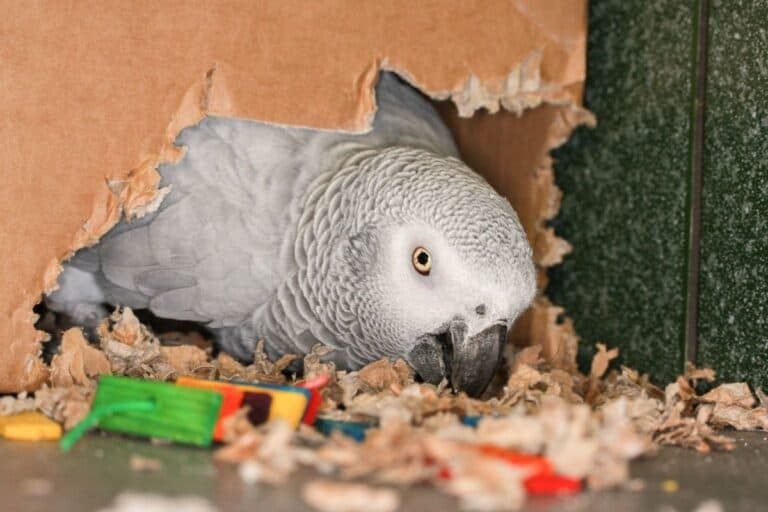Bird Nest Identification: 5 QUICK Ways! (Read THIS First!)
We’re reader-supported; we may earn a commission from links in this article.
You may have seen many bird nests around your area or out in the wild, and have always wondered how you can identify the bird that calls it home. It can definitely be a wonderful experience to identify them! I was wondering the same thing, so I did a little online research for myself, and here’s what I found:
Bird nests can be identified according to these attributes:
- Location
- Physical Characteristics
- Time of Year
- Appearence of Eggs In The Nest
- Clutch Size
Once a birds’ nest is identified, the species of the bird that owns the nest can be easily identified.
Video On Bird Nest Identification
There are many details in each of these categories that you will need to take note of before you begin pointing out bird nests and be a master nest identifier! I’ve done all the homework for you – just read on to find out more!
Why Identify Bird Nests?
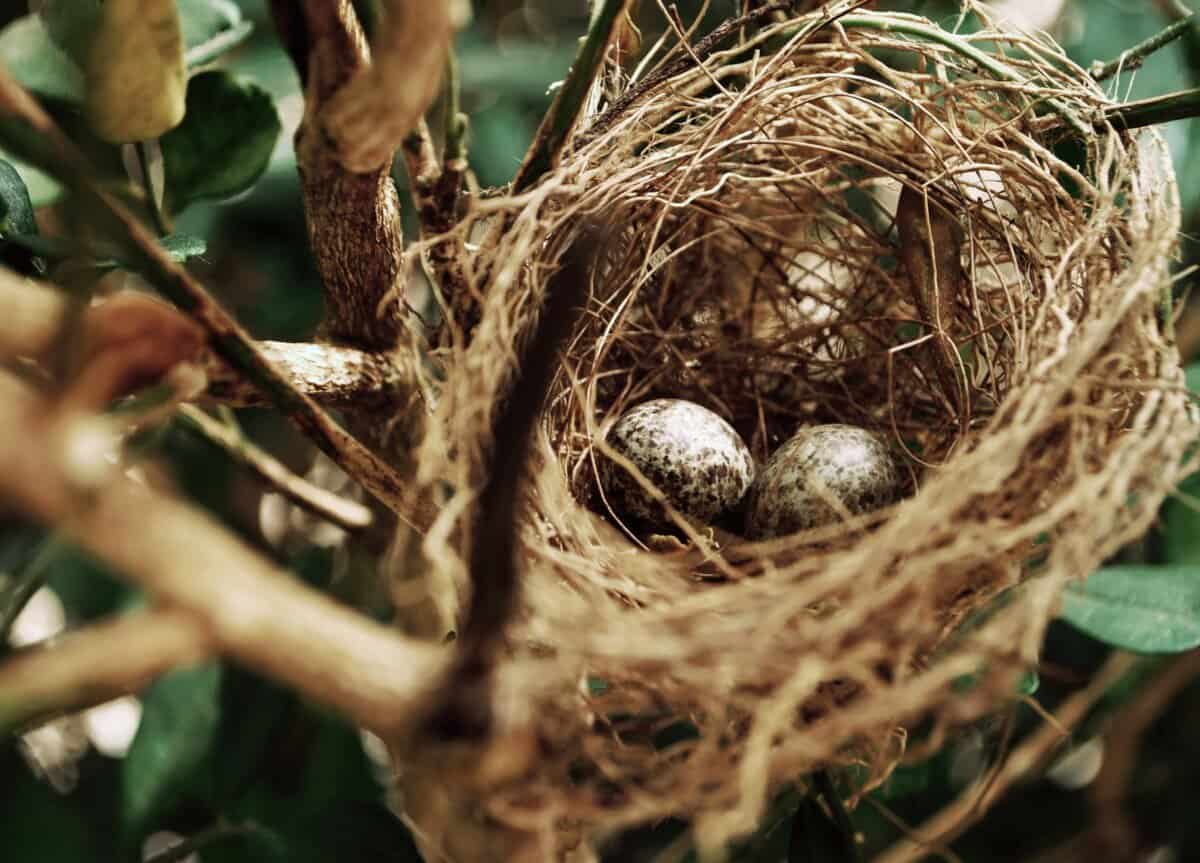
Before you begin your quest on doing bird nest identification, of course, you’ll want to know if it will be worth your while right? Well, here’s my direct answer: YES, nest identification is worth it! Bird nests are one of the best clues in figuring out the location where you can commonly spot a particular bird.
For example, if you can identify that a particular nest is from a Bluejay, then you would know that it is highly likely you see more bluejays in that area as there would be a bluejay family living there! Talk about confirmed bird sightings!
So yes, birds nest identification will help you in your birding experience by providing locations where you can easily spot your favorite feathered friends. Now let’s get right into the different attributes that make up a bird’s nest:
1) Location

Firstly, you’ll want to look at the most obvious out of all the characteristics: Location!
Your Location
Let’s start with the location of where you spot your bird. What I’m talking about will be your general surroundings. Different environments and ecosystems house different birds and thus different bird nests. In this, the same principles to identifying a bird apply.
If you are near the shore or water, the nest could possibly belong to a shorebird, or even a duck or waterhen. Are you near the jungle in a tropical climate? You would then need to look at birds that inhabit that area.
Are you located near a place with high altitudes, then you can consider birds that only live in high altitudes! Possibly eagles
If you’re in a barn, you may consider the nest to belong to a barn swallow or even an owl. If you happen to spot a bird in your housing estate, it could possibly belong to a bird commonly seen in your area.
Nest’s Location
Next, you would then consider the nest’s location. What I mean is the immediate location of the birds’ nest. For example, if the nest is on the ground, it could possibly belong to nighthawks or nightjars.
I want you to pay close attention to the HEIGHT of the nest. Is it high up?
Consider what kind of birds tend to perch high up in the trees. If a nest is way up high in a tree, you would not expect it to belong to a forager bird that looks for bugs in the ground.
One thing to note when carrying this investigative work out is that you should not approach too close to the nest. This is because you never know if the nest is currently being inhabited by hatchlings or if their parents would feel increased anxiety with your presence.
Use your binoculars to look at the nest from afar and determine that. Armed with this information, you will be better informed to guess/determine the type of bird the nest houses later on when you refer to a field guide.
Here’s also a useful repository from nestwatch.org on common nesting birds. From there, you would be able to filter by region, nest type, habitat, and substrate.
2) Physical Characteristics
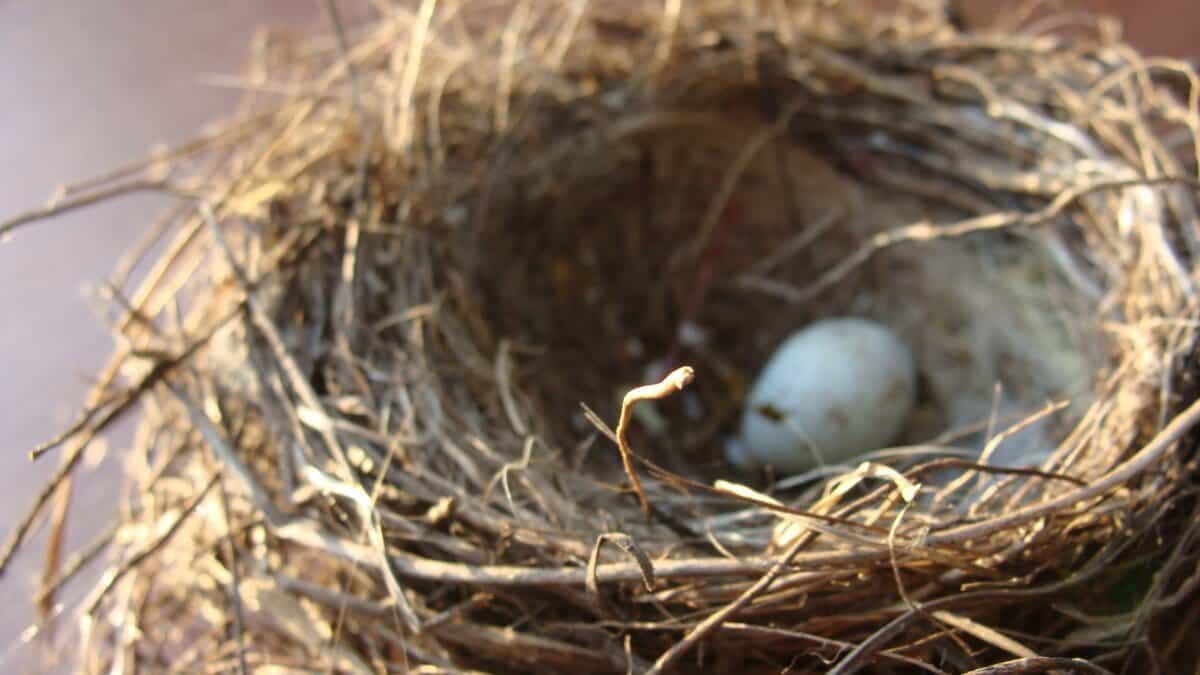
Secondly, we would then want to think critically and observe the physical characteristics of the nest: its appearance. Let’s look at the difference in appearances between nests.
(a) Shape

The most noticeable trait of a nest’s appearance would be its shape. Nests always come in different shapes and birds of the same species tend to have nests of similar shapes.
There are 3 shapes most nests take up: (1) cup-shaped nests, (2) cavity nests, and (3) pendant nests. Let’s go into more details!
(i) Cup-Shaped Nests
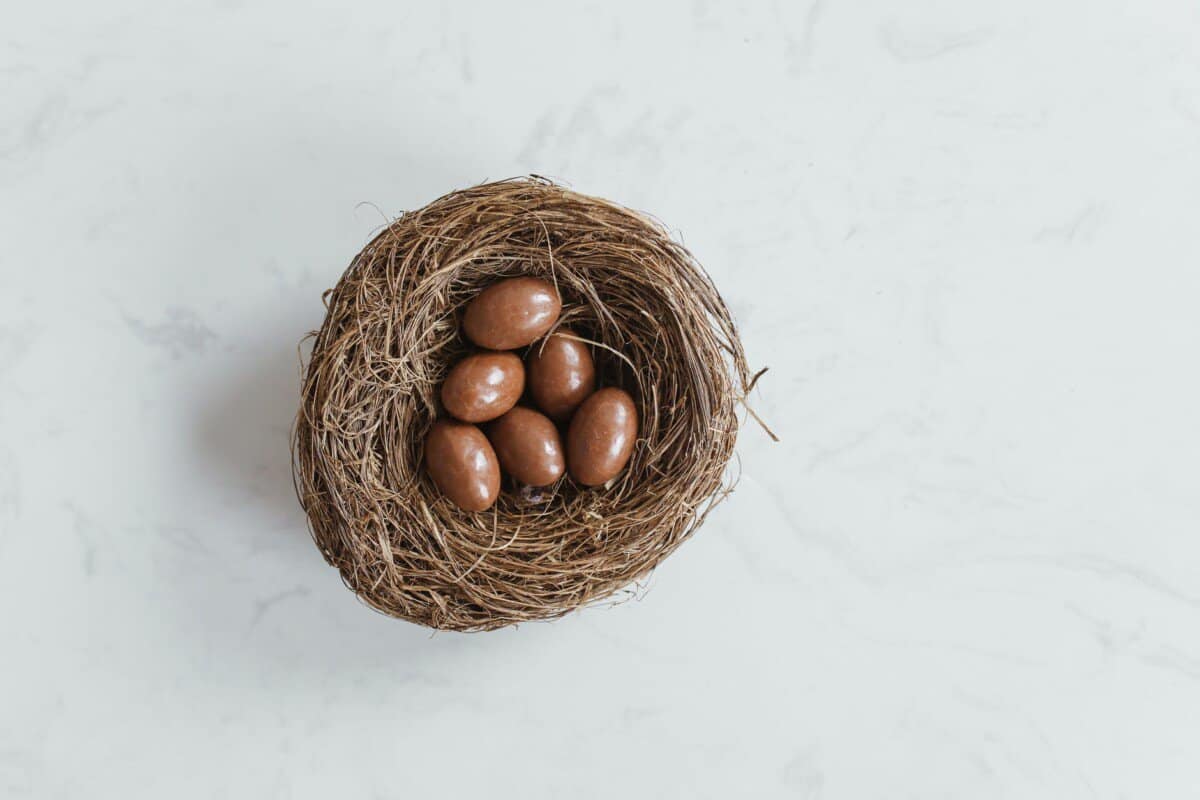
The cup-shaped nest is the typical kind of nest that you would think of when thinking of nests. (Look at the picture above!) The majority of bird nests fall into this category of nest shapes. This nest can sometimes differ in its inner and outer cup layers.
These nests are commonly found on trees and on random ledges in higher places. The birds that build these types of nest shapes are Barn Swallows, American Robins, and Yellow Warblers to name a few.
(ii) Cavity Nests

Cavity nests are nests that are basically a cavity where a bird will lay its eggs. The entrance to these types of nests would constitute a small opening like a hole. The birds that use these nests are known as cavity-nesting birds.
These are commonly found in telephone poles that have a hole, birdhouses set up by people, and natural cavities in trees. Common cavity-nesting birds include the American Kestrel, House Sparrow, Pileated Woodpecker.
(iii) Pendant Nests

These nests look like woven sacks that are very intricately made and typically dangle down from buildings or tree branches. They may even extend up to over several feet from where it’s hanged. The entrance to the nest is mostly found as a hole on the side.
Birds that make nests like these are the Golden-Backed Weaver, Baltimore Oriole, and other weaver bird species.
(iv) Platform Nests
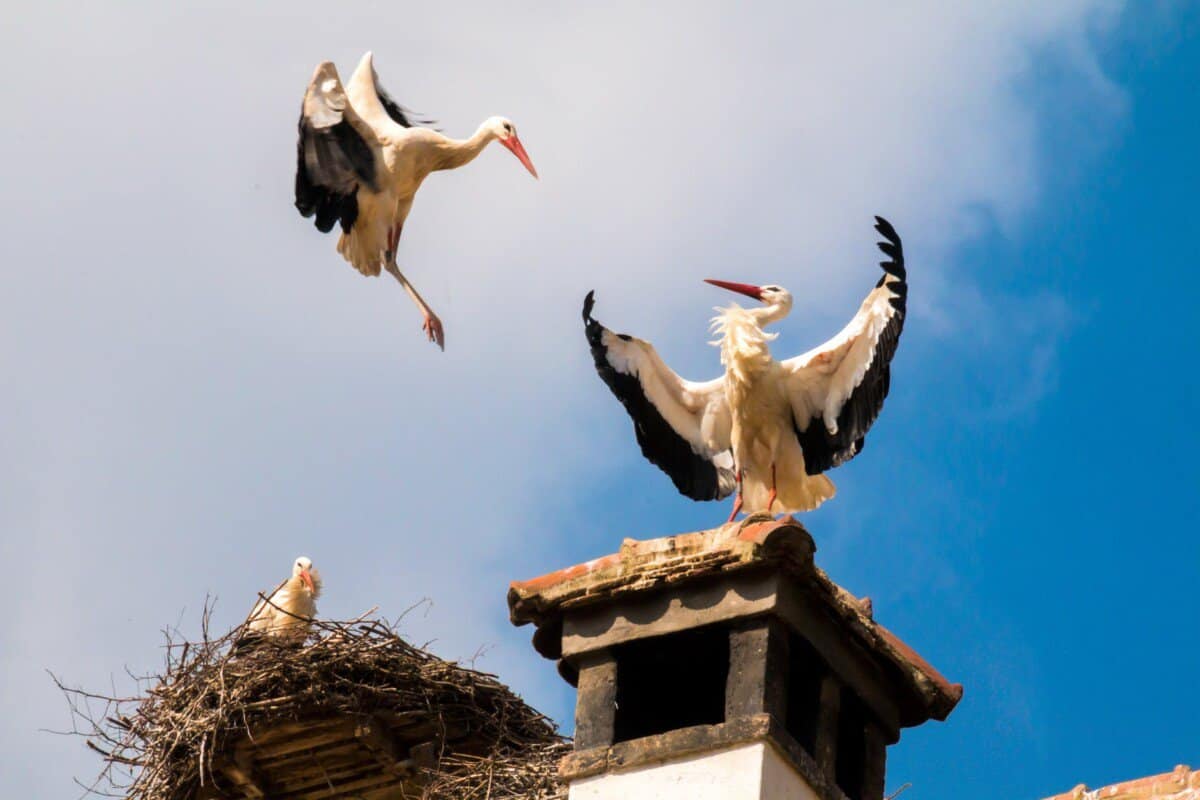
This nest is most of the time large and has a bulky look to it. Its surface is typically flat and has a little depression in the middle, but not as much as a cup-shaped nest. Also, take note that these platform nests are built very high up! I saw one in real life atop the lights of a sports stadium near where I live. It belonged to an eagle!
The birds that use these nests are usually larger birds and birds of prey such as the Great Blue Heron and Bald Eagle.
(b) Size
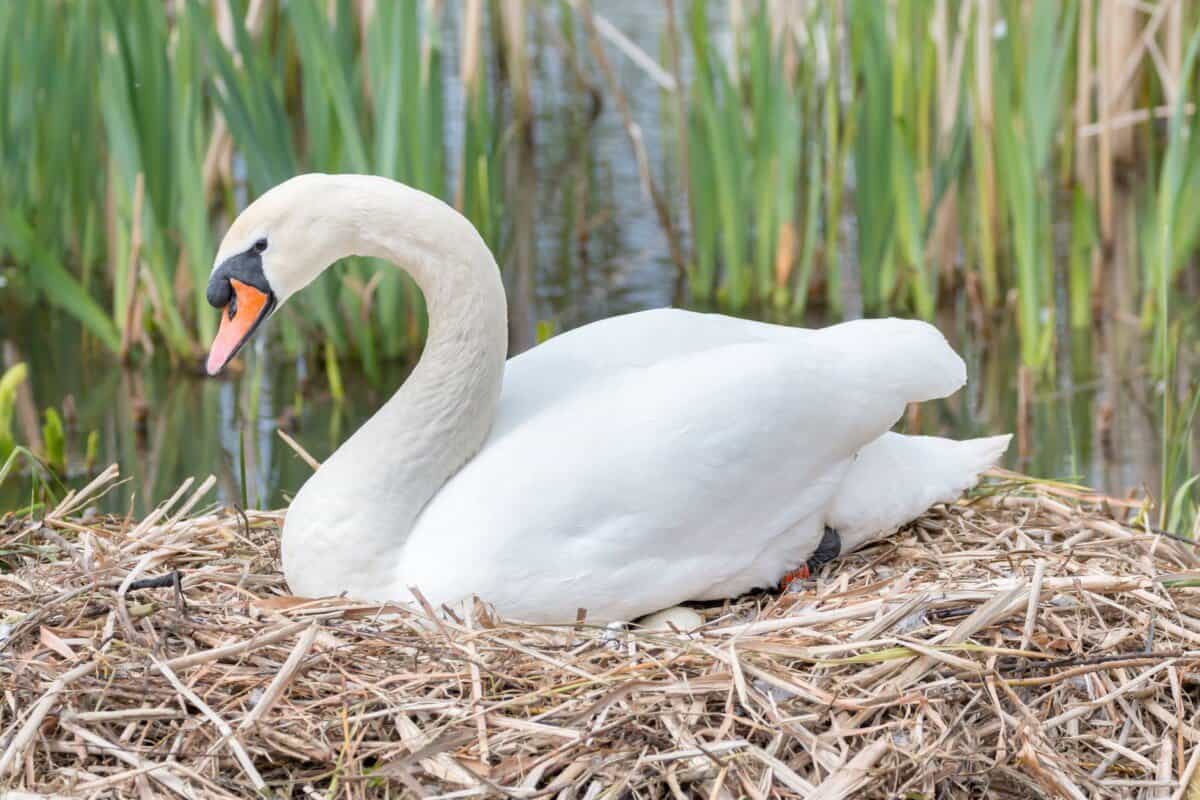
Take note of how big the nest is in relation to its surroundings. I would definitely recommend taking a picture of the nest, without a camera flash of course, so that you can document your findings, and can refer back to it later on.
One thing to note in general: the bigger the nest, the more likely it belongs to a bigger bird.
(c) Nest Materials
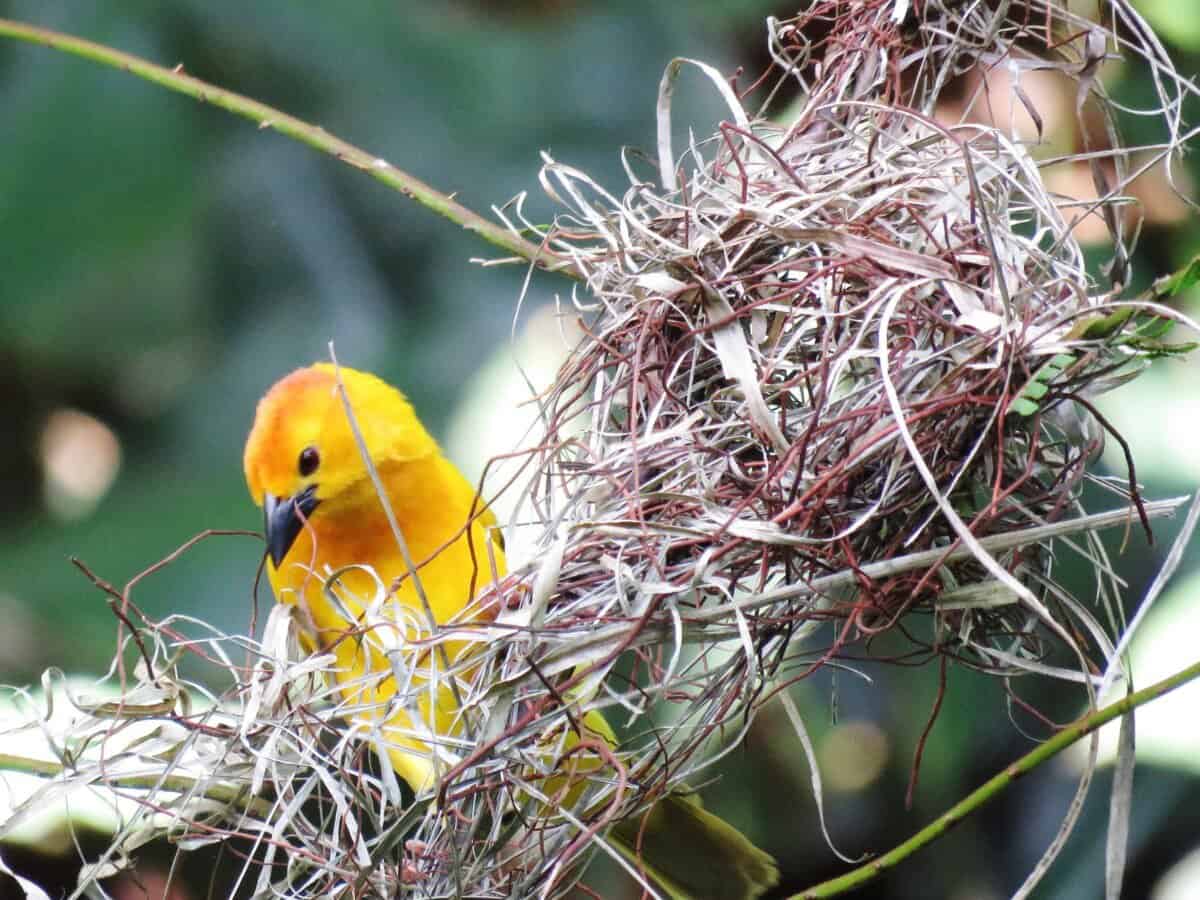
Now that you’ve noted the general appearance of the nest you have in mind, you will want to look closely at the material of the nest. Is the nest made of mud, grass, twigs, or moss? As different birds use different materials for their nest materials, this can be a good clue on what bird made the nests.
Most importantly, figure out the primary component of the nest, so that you’ll have a good idea of what bird to find in your field guide or online resources. I’ll give you a few examples of different nest materials that birds use:
| Bird | Nest Materials |
| Chaffinch | Moss, lichen, cobwebs, wool |
| House Sparrow | Grass, straw, feathers |
| Robin | Leaves, moss, hair |
Also, don’t forget to use the very useful tool provided by NestWatch here to filter birds by their nest type. Then you can look at a list of possible birds that live in that nest. You can then compare some of the pictures to your own and confirm their identity!
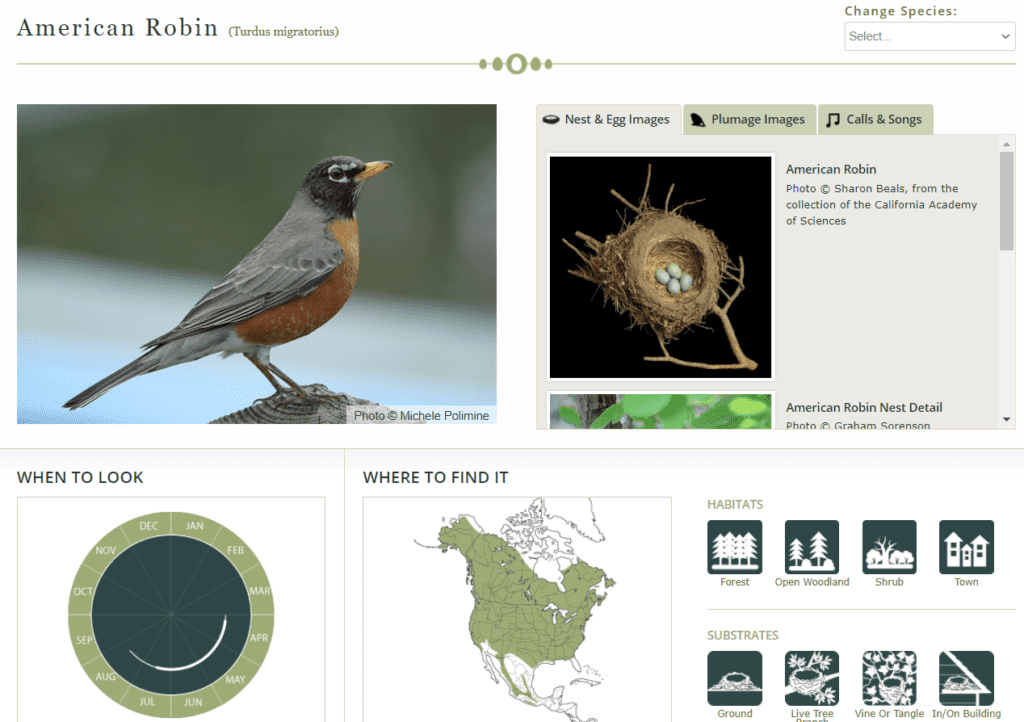
3) Time of Year
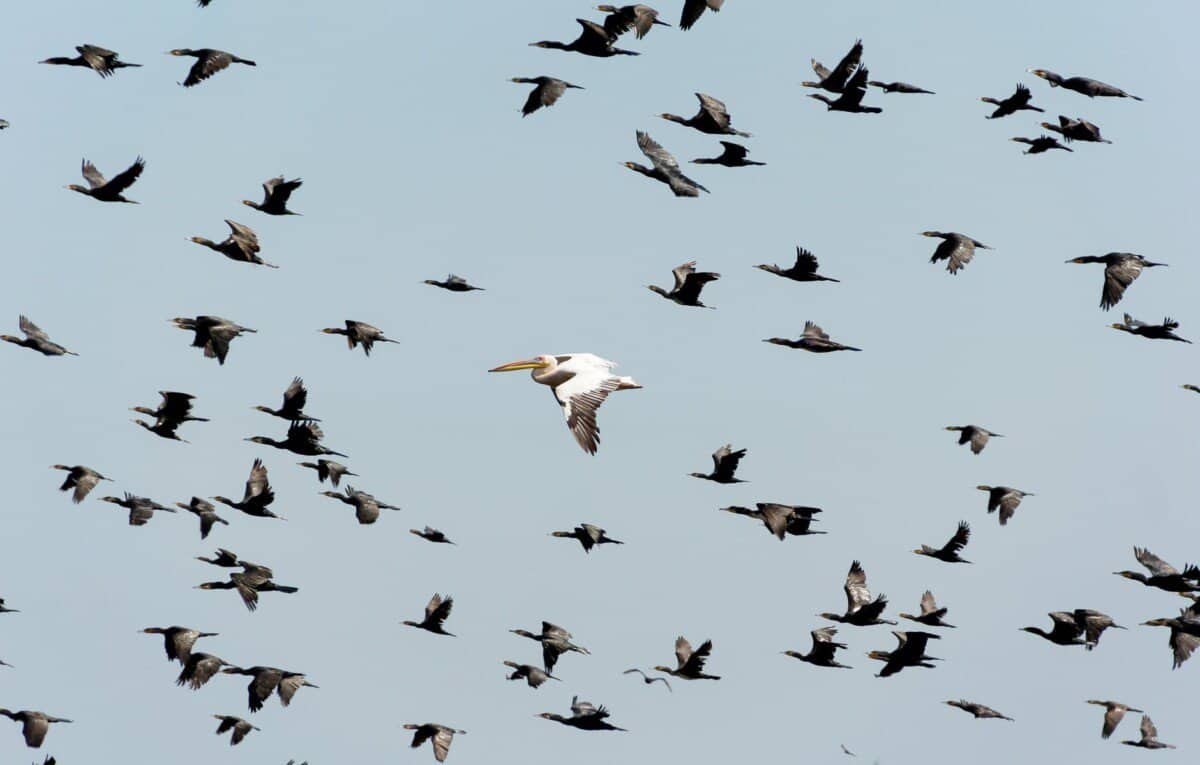
Time of the year is key in identifying birds’ nests! Migratory birds are different from resident birds in that they have different ranges when they breed.
Usually, if you spot a birds’ nest during the early springtime, these belong to resident birds. Migrants tend to come and nest later in spring and summer. Keep this in mind when you go and look for your bird nest in a field guide.
4) Appearance Of Eggs In The Nest
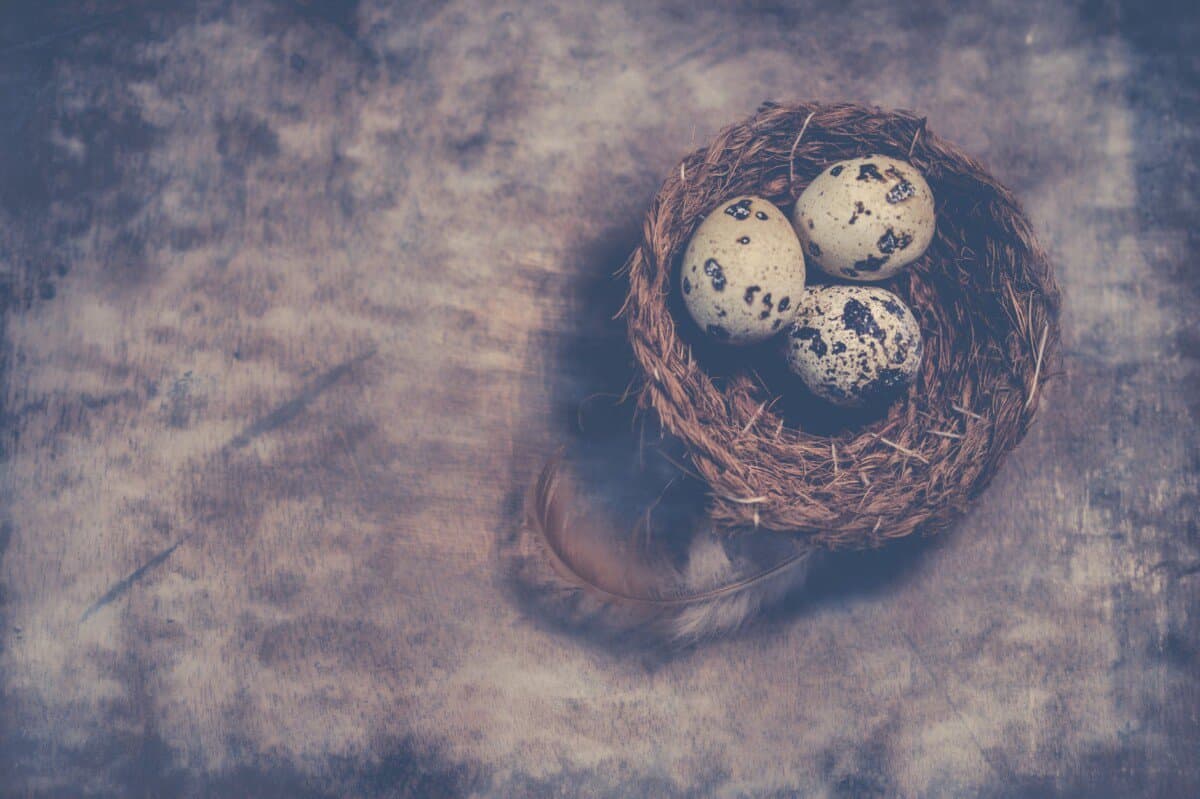
If you do happen to be able to spot the eggs in the nest, this would be one of the better determinants of the owners of the nest. Look closely at the following attributes of the egg: the size, shape, and color. The size of the egg tends to be related to the size of the adult bird.
So this means that if you see a smaller egg, then it would belong to a smaller bird, and vice versa. The shape of the eggs can provide clues for the lifestyle of the bird.
It may interest you to know that eggs that have a pointed end are designed to prevent themselves from rolling out of their nests (seabirds)!
For color, as this attribute is highly variable even within bird species, it can only be used as a clue to determine the mother bird, and not as hard evidence that the egg belongs to a particular bird.
5) Clutch Size
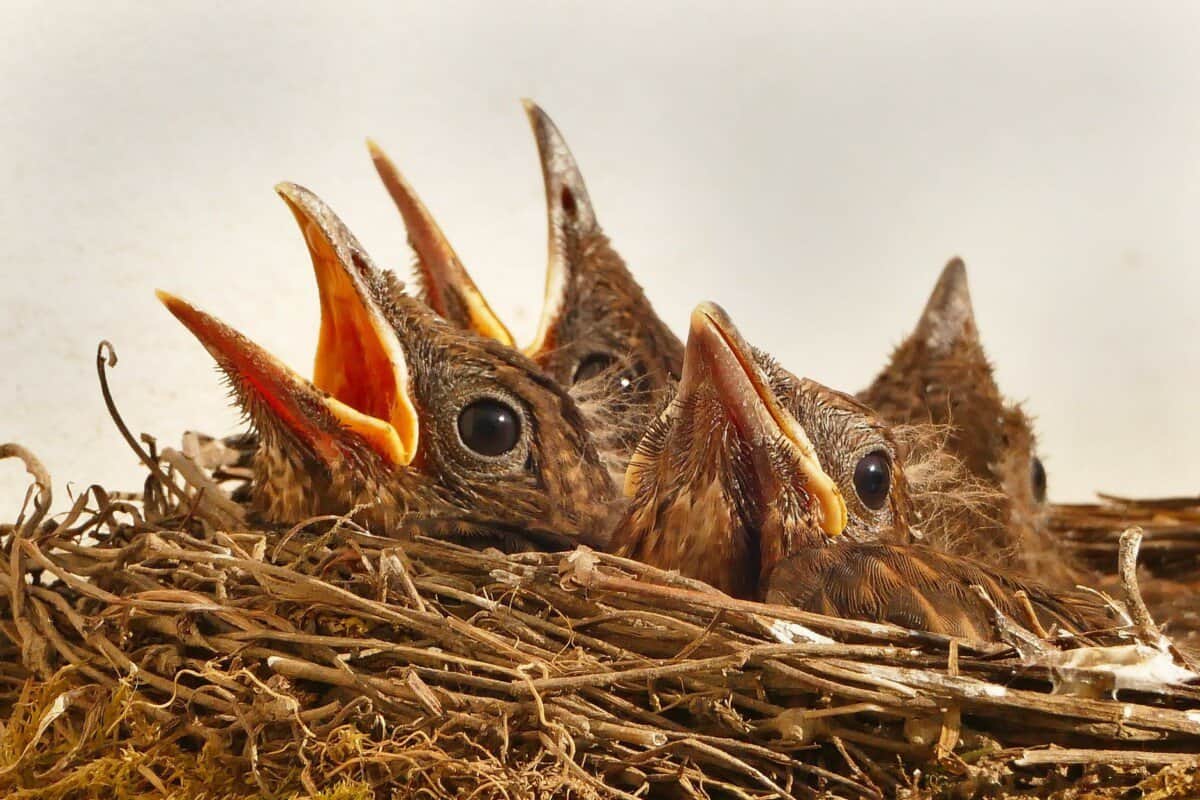
If you are lucky enough to spot the eggs or hatchlings, count them! Now if you don’t know what a clutch is, it is the total number of eggs that are laid by one bird during a single nesting session.
The clutch size of a nest varies between bird species, so this number can help to rule out some closely matched candidates for your nest in mind. To help you out, here’s a table of some common bird species and their average clutch sizes.
| Bird Species | Average Clutch Size |
| American Crow | 4-5 |
| American Kestrel | 4-5 |
| Baltimore Oriole | 4 |
| Cedar Waxwing | 3-5 |
| Mourning Dove | 2 |
If you’d like to access a full table, you can access this link from nestwatch.org.
Information Resources On Bird Nests
Now that you’ve been armed with some information or gained a clue as to what the nest you’ve been thinking about most likely belongs to, here are some links to good resources and field guides where you can more confidently confirm your suspicions!
Nestwatch Focal Species Guide

This focal species guide is a good database where you can filter nesting birds by region, nest type, habitat, or substrate. With the information you found out from this article, you can use this tool to figure out the bird that lives in the nest that you saw.
Final Thoughts
Now that you’ve been through all that educating on the different attributes of bird nests and how to identify their owners, all you have to do is head outdoors and go birding outdoors!
Find your nest and all the best! Happy birding!
My Recommended Birding Resources:
Hey there, Justin here!
Here’s a list of all my favorite resources, products, and brands I trust and love.
My Celestron Nature DX 8×42 Binoculars: It’s a great budget pair for beginner birders. Highly valued for its price! Read my review.
Safe Paint for Bird Baths Guide: Learn about non-toxic paint for painting bird baths.
Safe Sealers for Bird Baths Guide: Learn which sealers are safe for bird baths.
Safe Paint for Bird Feeders Guide: Learn what special care needs to be taken to paint bird feeders with the right paint.
Safe Paint for Birdhouses Guide: Learn about non-toxic paint for painting birdhouses. (Not the same as bird baths!)
Bird Identification Apps Guide: 2 of my favorite birding apps are Merlin Bird ID, and eBird Mobile! Merlin is great for tracking and identifying birds, and eBird Mobile is great for tracking the birds sighted when birding.
Check out my resources page for the full list of resources I recommend!
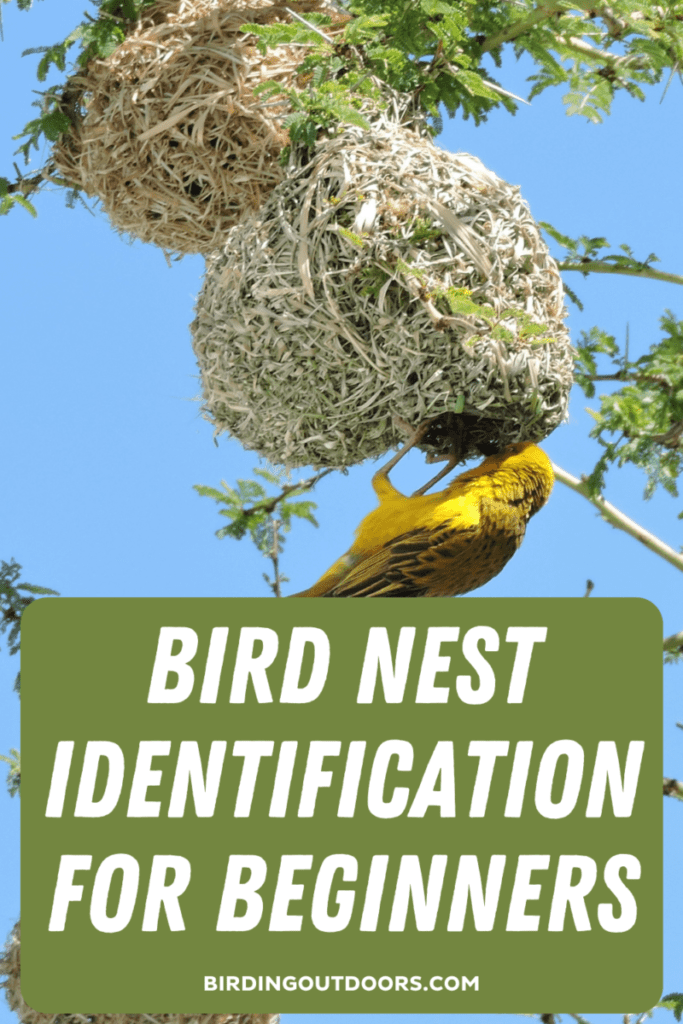

Justin Chia
Justin is the founder and author of Birding Outdoors. He is a Nanyang Technological University (NTU) alumnus with a Bachelor of Biological Sciences and a former data analyst.
Now, Justin runs the Birding Outdoors blog full-time, hoping to share his deep love for birds, birding, and nature with others.
To unwind, Justin enjoys gaming and reading.


![Do All Baby Birds Survive In Nests? [ANSWERED! + FAQs]](https://birdingoutdoors.com/wp-content/uploads/2021/06/bird-4299034_1280-768x512.jpg)
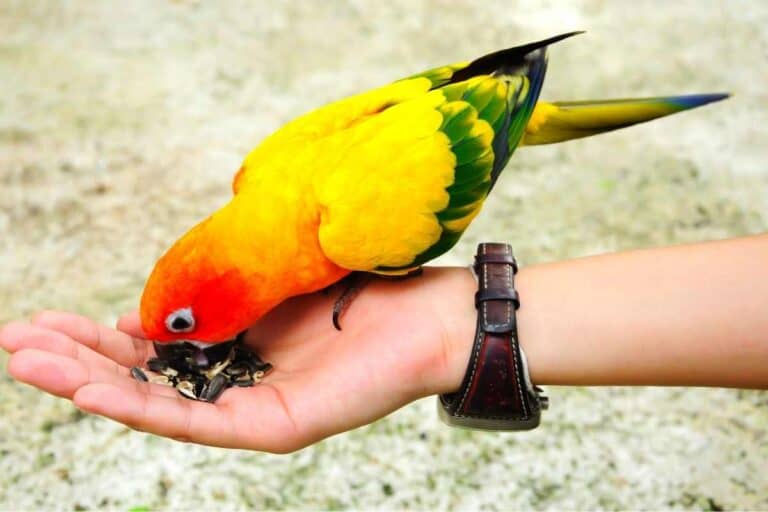
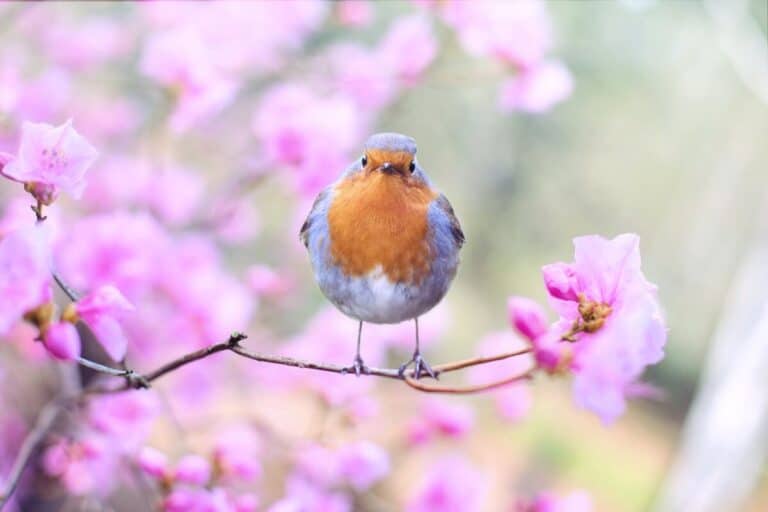
![How Long Do Birds Take To Learn To Fly? [ANSWERED!]](https://birdingoutdoors.com/wp-content/uploads/2021/05/main-pic-fledgling-768x512.png)
